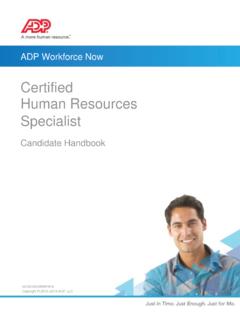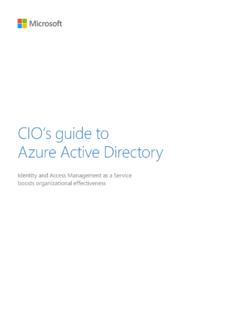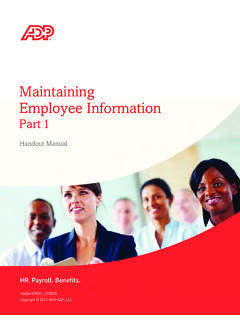Transcription of Staying alive in Scotland - SSKS
1 [ ; Staying alive IN Scotland The aim of this report is to stimulate actions which can reduce the high mortality rate amongst people with drug problems in Scotland by encouraging a wider and more holistic view of drug related deaths. June 2016 Strategies to Combat Drug Related Deaths 2 Contents Introduction and Methods .. 6 Introduction .. 6 Methods .. 7 Section 1: Key Principles .. 8 Section 2: Key Findings and Good Practice Indicators .. 10 Key Finding 1: Drug Related Death Monitoring and Learning in ADPs is variable across the country .. 11 Key Finding 2: Being in treatment is a protective factor against death .. 12 Key Finding 3: ORT is a protective factor and Low Threshold services decrease mortality.. 13 Key Finding 4: Retention in Services is a protective factor against Drug Related Death.]
2 15 Key Finding 5: Information Sharing across ADP area can be strengthened.. 17 Key Finding 6: Injecting drugs can result in a range of injecting related health problems.. 19 Key Finding 7: Blood Borne Virus testing and treatment should be increased.. 20 Key Finding 8: Naloxone is an effective intervention in preventing Opioid Overdose Deaths .. 22 Key finding 9: Release from prison/police custody are risks for overdose death .. 24 Key finding 10: Ageing drug users bring new challenges to services.. 26 Key Finding 11: Correlates with an individual s mental health .. 27 Key Finding 12: Drug users experiencing Homelessness have an increased risk of DRD .. 28 Key Finding 13: Recent percentage increases in DRD are higher for females .. 29 Key Finding 14: Prescription drugs and non-opiate illicit substances .. 30 Key Finding 15: Attitude of workforce key to engagement .. 31 Section 3: Good Practice Baseline Tool.
3 32 Reference List .. 48 3 Appendix 1 -ADP DRD Questionnaire .. 51 Appendix 2 -National Forum on Drug-related Deaths Recommendations 2014 .. 54 Appendix 3 -Seminar Programme .. 55 Appendix 4 -Presentation summaries .. 56 Appendix 5 -ADP Good Practice Examples .. 60 Appendix 6 -Ministerial Letter .. 61 Appendix 7 Consultation Document .. 63 Appendix 8 Workshop Notes ADP Reference Group Death Prevention .. 64 Appendix 9 -ISD Definition of a Drug Related Death .. 66 4 Overview There is widespread concern among key stakeholders, and within the wider public discourse, about the extent of drug-related mortality in Scotland . 613 drug related deaths were registered in Scotland in 2014, 16% more than in 2013.
4 This was the largest number ever recorded, 72% higher than in 20041. But these deaths, as defined by Information Service Scotland (ISD), sadly are only part of a wider picture of health-related impacts of problematic drug use that have led to increases in deaths among people who use or have used drugs problematically. Bacterial infections, deaths from cardio-vascular disease, suicide, liver disease, cancer and other health conditions2 3may all have significantly increased due to the negative impact of substance use on people s health and wellbeing. Systemic disease, most prominently liver disease, is common in this group and can influence the dynamics and age demographics of wider drug-related death. Wider considerations including the consequences of social policy such as welfare reform are also of concern. This partly evolves from and is exacerbated by the stigma that historically increases as society becomes more unequal45.
5 Many of those at highest risk of death express ambivalence towards living or dying thus bringing a challenge when delivering harm reduction It is estimated that the ageing process among older people with a longer term drug problem is accelerated by at least 15 years and at the age of 40, drug users may need a level of care corresponding to that required by an elderly person in the general population7. The Scottish government are currently commissioning a piece of work to support the development of strategic and operational responses are developed to meet the health care needs and increased risk of death. The interim report8 shows that there are currently approximately 30,000 individuals with a drug problem who are between 35 and 65 years old. Comparing drug death averages for 2000-2004 and 2010-14 shows large increases in the number of deaths in the 35-65 year old age group9.
6 Many of the key findings of this report are also applicable to these older drug using groups. 1 2 3 4 Wilkinson, R., & Pickett, K. (2009). The Spirit Level: Why More Equal Societies Almost Always Do Better. London: Allen Lane. 5 6 7 Vogt I. Life Situations and Health of Older Drug Addicts: A Literature Report. ;10 (1):17 24. 8 Scottish Drug Forum Older People with drug problems in Scotland Interim Report June 2016 9 5 At the time of writing this report significant changes to the health and social care landscape in Scotland are taking place. A new drugs advisory landscape in Scotland has recently been established10. The Partnership for Action on Drugs in Scotland (PADS group) met for the first time in January 2016 and brings together leaders from the fields of addiction, mental health, inequality, social work and health and social care.
7 The group has a dynamic and action orientated approach and includes a sub group on drug related deaths, harm and quality improvement. Legislation to implement health and social care integration, passed by the Scottish Parliament in February 2014, came into force on April 1, 201611. This brings together NHS and local council care services under one partnership arrangement for each area. Working together, NHS and local council care services will be jointly responsible for the health and care needs, to ensure that those who use services get the right care and support whatever their needs, at any point in their care journey. This integration should support the work of ADP s and assist in the implementation of this report s key findings. The on-going development of a Recovery Oriented System of Care (ROSC) in each ADP area is critical in helping ensure that locality-based specialist and non-specialist services work in partnership to meet the needs of service users timeously, comprehensively and effectively.
8 As ROSC is an outcome-driven concept, each ADP has responsibility for establishing systems to monitor and measure performance of the local ROSC and the services within it, thereby informing a cycle of continuous improvement. The publication of the Quality Principles (Standard Expectations of Care and Support in Drug and Alcohol Services) followed directly from the 2013 Review of Opiate Replacement Therapy in Scotland . These provide a foundation for the commissioning, planning, delivery and review of recovery-focused services, with the ultimate aim of ensuring consistency in service quality across the range of services in each ADP area. For policy makers, service planners, commissioners, managers and staff, responding to a more vulnerable and unstable group who are at greater risk of overdose and other health and social issues that increase mortality, who have a history of moving frequently in and out of services and have sometimes relatively short periods of treatment, requires due consideration.
9 10 11 6 Introduction and Methods Introduction With an estimated 61,50012problem drug users, Scotland has one of the highest rates of problem drug use per head of population in Europe. 613 drug-related deaths (DRD) associated with drug overdose were registered in Scotland in 2014, a 72 per cent increase since in 200413. These deaths as defined by Information Services Division (ISD) Scotland (appendix 9) and are mainly attributed to direct correlation with drug use, mainly overdose. The wider numbers that could be related to drug use are likely much higher. Significant efforts have been made in Scotland to understand the deaths, which have included a National Forum on Drug Related Death and the establishment of a National Drug Related Deaths Database ( Scotland (NDRD).)
10 ADP s coordinate annual data on the nature, health and social circumstances of individuals who have died a drug related death to be analysed by the NDRD. This report aims to stimulate actions to prevent or minimise the number of deaths whether as a direct or indirect consequence of an individual s drug use. In August 2014 a joint Ministerial letter (appendix 6) encouraged ADPs to work with Scottish Drugs Forum (SDF) to develop evidenced strategic priorities that will decrease the numbers of drug related deaths. Because of their broad memberships ADPs are well placed to address multi-factorial issues, such as those often implicated in drug related death. This report identifies key initiatives that are being undertaken at a local level and examines other evidence-based solutions in order to set out clear strategies that can reduce the number of drug related deaths in Scotland .






